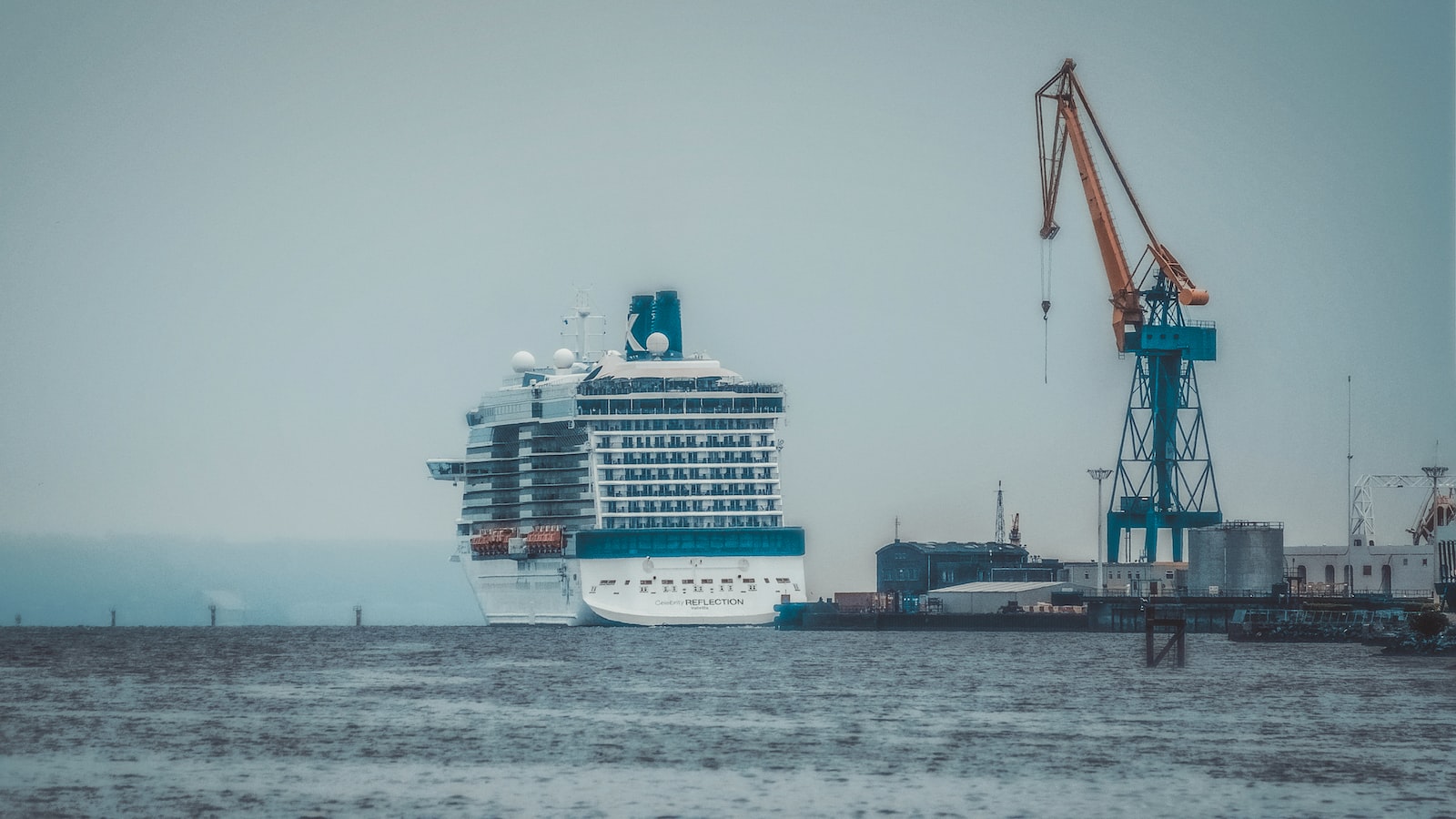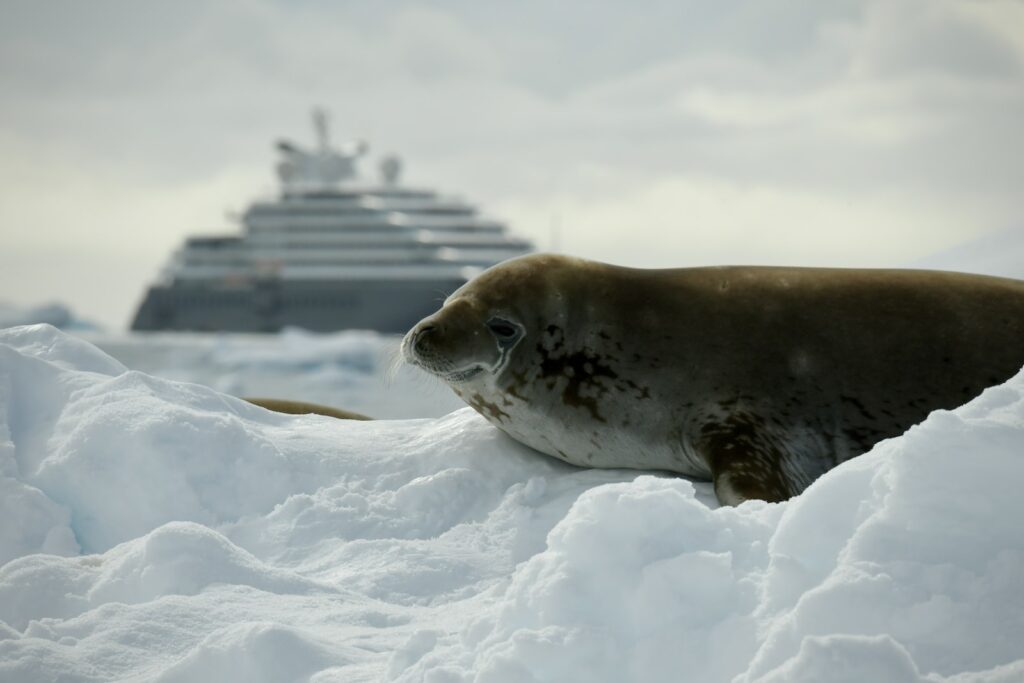If you’ve never been on a modern cruise ship, you may not grasp the staggering scale of one of these floating cities. People who have traveled on cruises probably remember the first time they saw one in person and stood in awe of its size.
Many of us look at these incredible creations and wonder how somebody goes about building something like that. Read below to find out how long ships take to build in today’s cruise industry.
How Long Does It Take To Build a Cruise Ship?

Because modern cruise ships have different options, accommodate different numbers of passengers, and can sport multiple designs, there’s not one answer to how long construction takes. On average, a cruise ship construction project can take between 12 and 24 months.
Of course, the larger a ship, the longer it will take. From the first pieces of steel laid down for the keel to the final decorating touches before the craft gets delivered to the cruise line that ordered it, even the smallest cruise ship will take at least a year to build.
This time doesn’t include the design and testing phases, which can take years to complete. However, once a cruise line places its order, nine construction stages occur before any cruises can occur.
The 9 Stages of Building Cruise Ships
It seems challenging to believe that building something so massive can happen over only nine steps, but it’s true. Full disclosure, some of these stages are enormous undertakings and can take months.
A Cruise Ship Line Places its Order
Major cruise lines don’t build their own ships. The process takes specialized (and expensive) tools and materials, so they order a cruise ship from a shipwright. The three shipwright companies building these enormous ships are based in Europe and construct nearly every cruise ship worldwide.
Shipwrights will need to know what size ship the cruise company wants, how many guests they wish to accommodate, and many other details.
Shipwrights Cut the Steel
The first pieces of steel for the ship’s keel get cut from massive steel sheets. Sometimes, shipyards hold ceremonies where a shipyard official breaks a champagne bottle on the hull before the craft’s first voyage.
Ceremony or not, shipbuilders use computers to determine how best to cut the steel sheets into the necessary shapes while minimizing waste.
Building the Keel
As a ship’s spine, the keel must be laid out first and accurately. The shipwrights must do it first because every nut, bolt, and steel panel gets supported by the keel. They should do it accurately because the slightest miscalculation or other mistakes can structurally compromise the ship.
Due to the size of modern cruise ships, shipyards use GPS positioning to ensure the keel’s layout is perfect.
Launching the Ship
Upon completion of the keel, the skeleton of a new ship moves to another part of the shipyard. The next new ship’s keel can’t be built until this one is out of the way, and the subsequent phases of construction require different tools located in other parts of the shipyard.
If there are any undetected problems with the keel and hull, this first launch will likely reveal them.
Once the nascent ship gets to its new location, shipwrights begin building the ship’s multiple levels, installing engines and the propulsion system, climate control hardware, guest accommodations, and crew quarters.
Trial Runs
Because passengers trust their lives on cruises to a ship when they’re hundreds of miles from land, the ship’s seaworthiness and overall safety are of the utmost importance.
Trial run cruises involve testing the newly built ship. In general, the seas, weather, and nature can inflict brutal punishment on any manufactured item, so regulatory agencies need to see that a new cruise ship can withstand extreme situations.
Trial runs involve testing the limits of the ship, exposing it to extremes that it will hopefully never experience. However, if it does, the testing will have already shown that the boat can handle whatever it faces.
Transferring the Ship
The cruise line takes ownership of the completed ship in preparation for offering cruises to the general public. Like the first cuts of steel, there is often a ceremony involved. After all, thousands of people have spent lots of time building the boat. It warrants something more substantial than tossing the keys to the new owner.
The Shakedown Voyage
Despite sounding like something adjacent to criminal activity, the shakedown voyage is a cross between a test drive and the new owner’s trial run. The cruise line takes the ship out with its own crew on one or more cruises without paying customers.
Think of it as the ship’s purchaser doing its own testing and seeing the cruise liner in action for itself. The new owners might want to see how much vibration guests might experience on cruises or just see the boat in action for themselves. It’s also essential to ensure the furniture and important fixtures stay in place.
The Christening
Ever notice how, when you see someone breaking a bottle of champagne on a ship’s hull in the movies, it’s always a woman? That’s not an accident. Tradition holds that a cruise ship has a ship’s godmother, a woman who names the craft and brings it luck.
Sophia Loren is a “ship godmother” to no less than 15 ships. Others include Oprah Winfrey, Mariah Carey, and Queen Elizabeth II.
Since today’s cruise ships are so large (the largest cruise ship, Royal Caribbean’s Wonder of the Seas, is almost a quarter of a mile long), godmothers these days push a button to launch a bottle through the air to break against the enormous keel before the first cruises.
Maiden Voyage
Though it’s been through some test runs, the “maiden voyage” is the ship’s first cruise with paying passengers aboard. It can come as many as 24 months after the cruise line orders the vessel and is the first of many cruises the new craft will take.
How Much Does a Cruise Ship Cost To Build?
The biggest cruise ships can cost up to a billion dollars to build. This exorbitant cost requires every step of construction to be executed flawlessly and consistently, as the slightest mistake can incur mind-boggling costs.
Final Thoughts
Cruises can be relaxing, wonderful experiences, but offering them to passengers requires building the cruise ships themselves first. Over a nearly two-year process, shipwrights build boats that stand as remarkable feats of structural engineering.





